
Planetary Picture of the Day
Week of April 24, 2023
An eclipse over Australia, a milestone for Ingenuity, and Mercury's sodium tail.
Monday, April 24, 2023
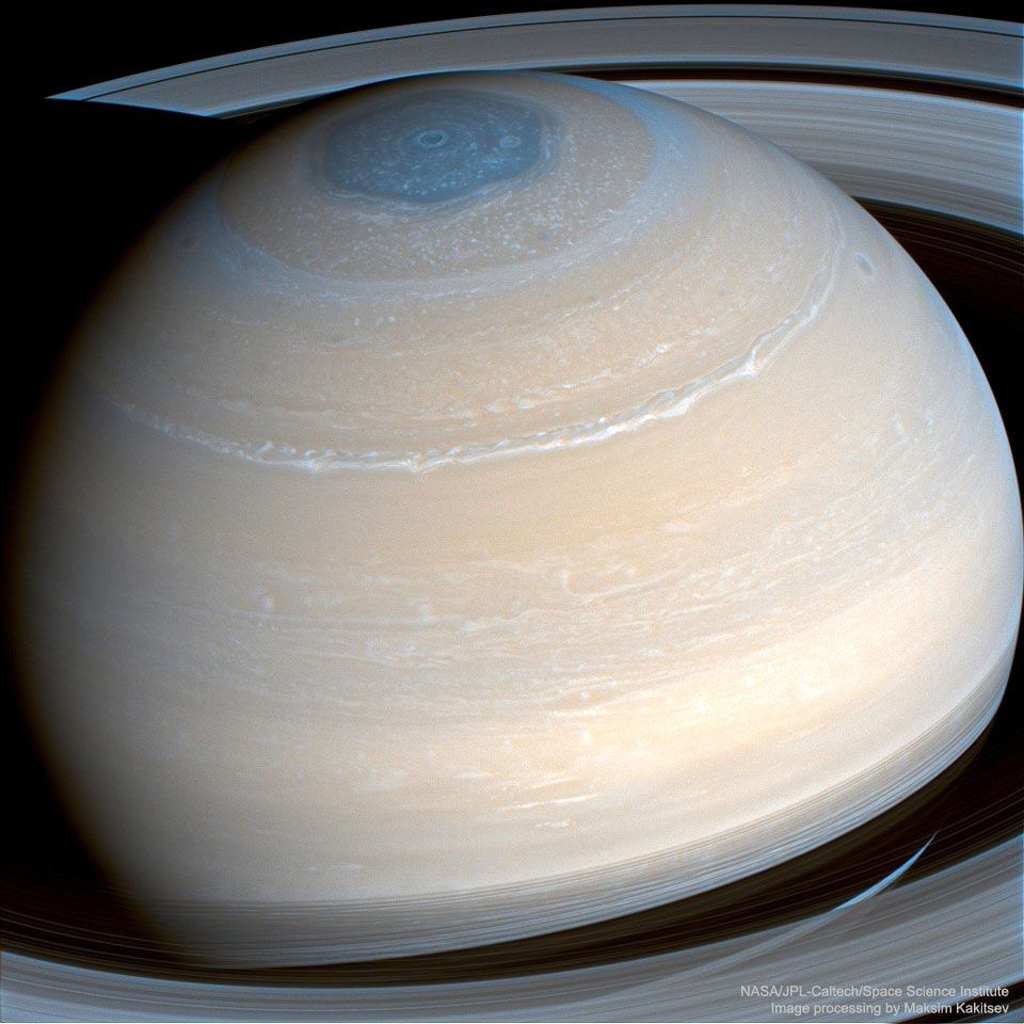
Saturn in Infrared from Cassini
Many details of Saturn appear clearly in infrared light. Bands of clouds show great structure, including long stretching storms. Also quite striking in infrared is the unusual hexagonal cloud pattern surrounding Saturn's North Pole. Each side of the dark hexagon spans roughly the width of our Earth. The hexagon's existence was not predicted, and its origin and likely stability remains a topic of research. Saturn's famous rings circle the planet and cast shadows below the equator. The image was taken by the robotic Cassini spacecraft in 2014 in several infrared colors.
Tuesday, April 25, 2023
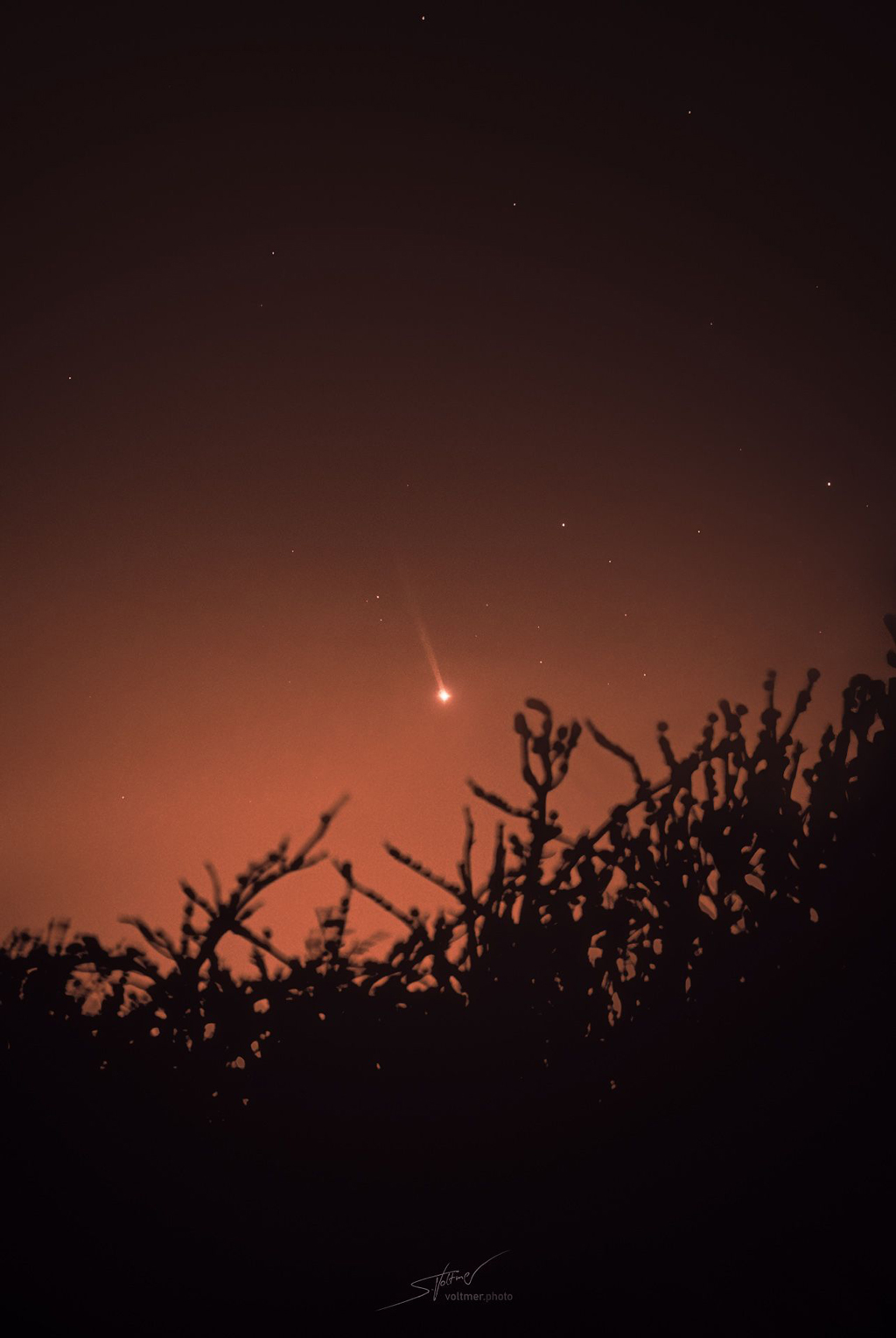
Mercury and Tail
This is NOT a comet, nor even a meteor, but the planet Mercury, which is currently visible just after sunset. The solar wind and micro-meteorites eject sodium atoms from Mercury’s surface, creating a yellow-orange tail of sodium gas that is around 24 million kilometers long.
Astrophotographer Sebastian Voltmer captured this stacked CCD image during Yuri's Night using a 135mm lens and a 589nm filter.
Wednesday, April 26, 2023
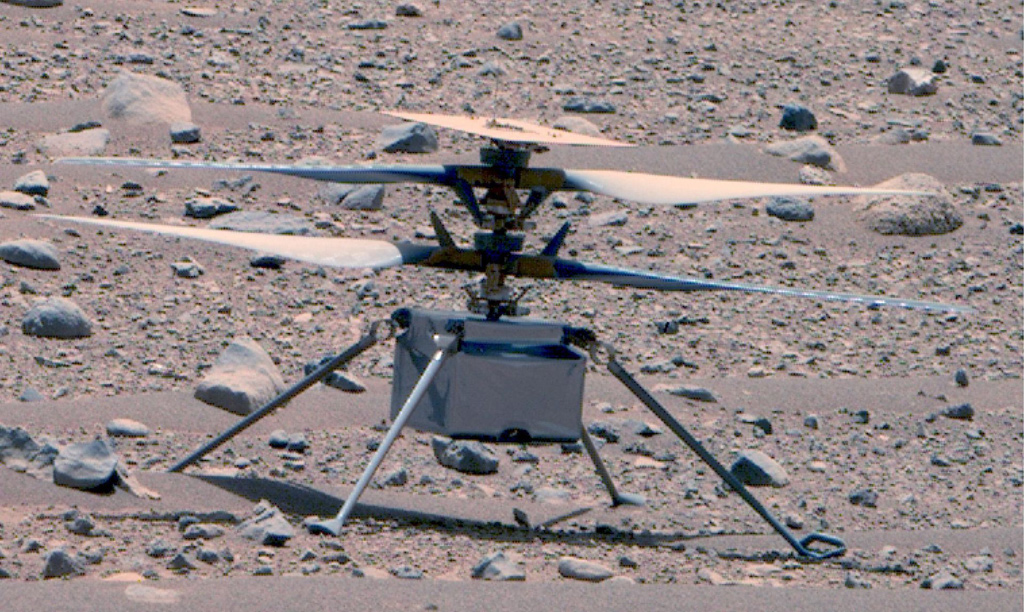
Martian Milestone for Ingenuity
This April 16, 2023, enhanced color image of NASA's Ingenuity Mars Helicopter is the clearest view of the rotorcraft since its first flight. Ingenuity completed its 50th flight on April 13, 2023; the helicopter's first flight on Mars was two years ago on April 19, 2021.
This picture was taken by the Mastcam-Z instrument aboard the Perseverance rover. At the time the image was taken, the rover was about 75 feet (23 meters) away.
Thursday, April 27, 2023
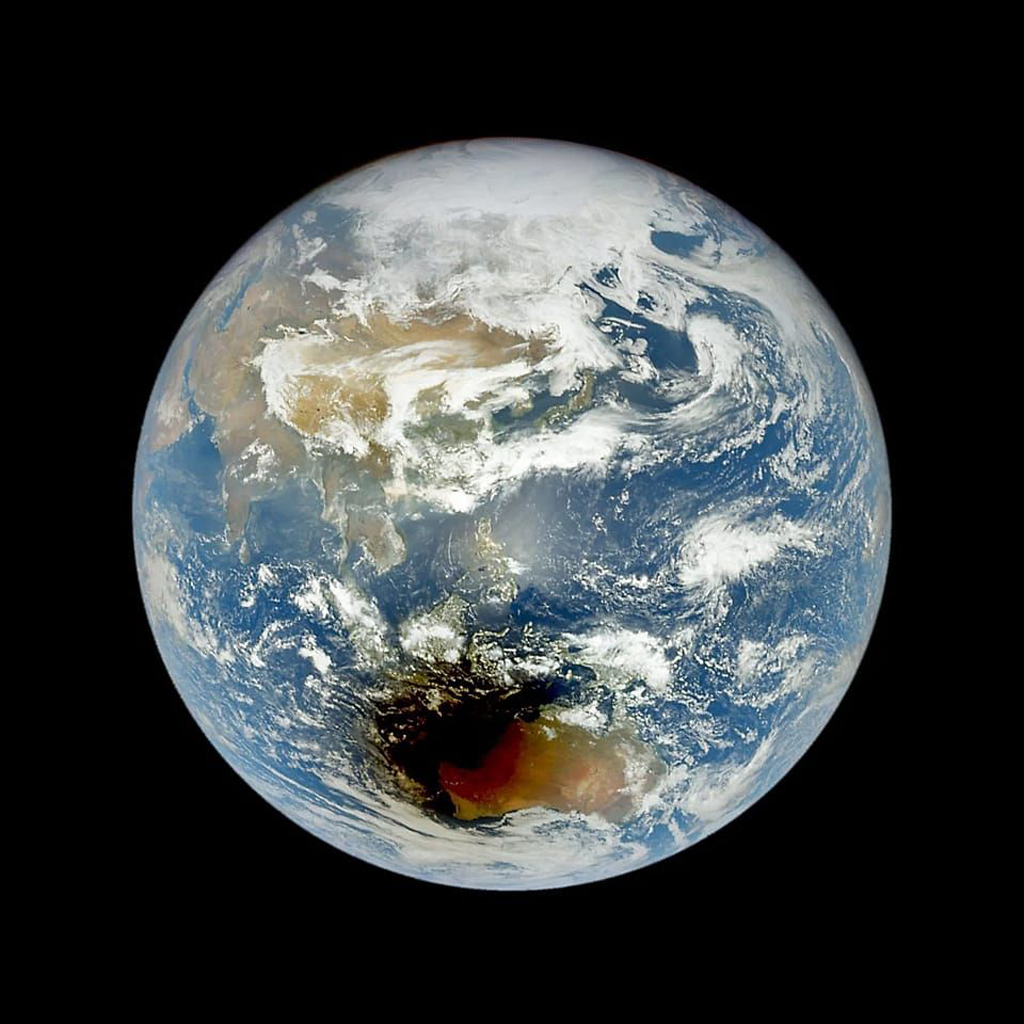
Australian Eclipse
On April 20, 2023, a hybrid solar eclipse occurred. Named the Nigaloo Eclipse, the total eclipse portion of the event passed over North West Cape on the very remote western edge of Western Australia. NASA's Deep Space Climate Observatory (DSCOVR) captured this image of the Moon's shadow during that time.
Friday, April 28, 2023
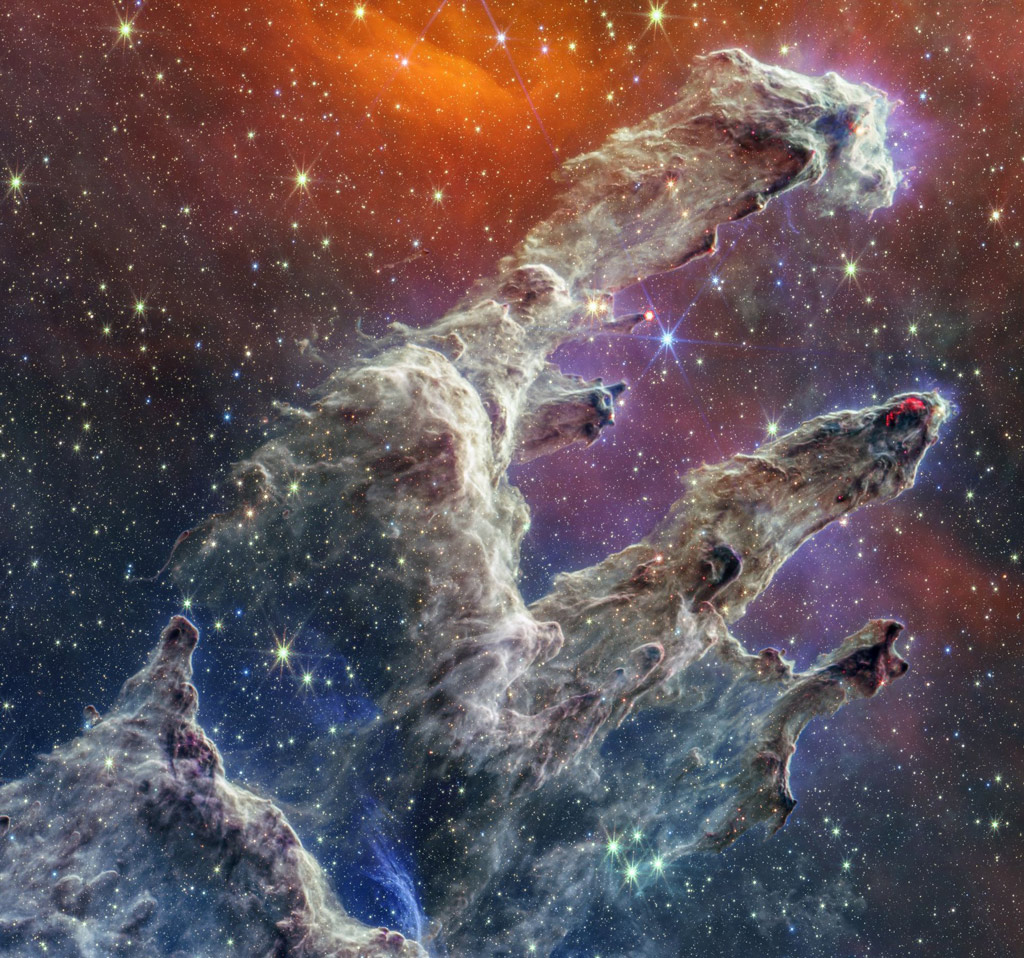
Pillars of Creation
By combining images of the iconic Pillars of Creation from two cameras aboard NASA’s James Webb Space Telescope, the universe has been framed in its infrared glory. Webb’s near-infrared image was fused with its mid-infrared image, setting this star-forming region ablaze with new details.
Myriad stars are spread throughout the scene. The stars primarily show up in near-infrared light, marking a contribution of Webb’s Near-Infrared Camera (NIRCam). Near-infrared light also reveals thousands of newly formed stars – look for bright orange spheres that lie just outside the dusty pillars.
In mid-infrared light, the dust is on full display. The contributions from Webb’s Mid-Infrared Instrument (MIRI) are most apparent in the layers of diffuse, orange dust that drape the top of the image, relaxing into a V. The densest regions of dust are cast in deep indigo hues, obscuring our view of the activities inside the dense pillars.





